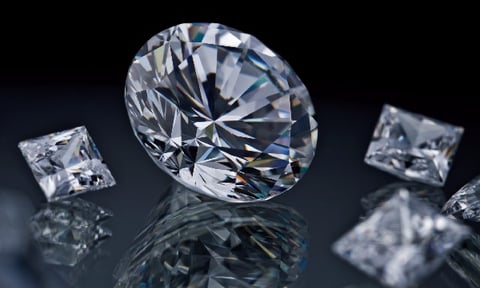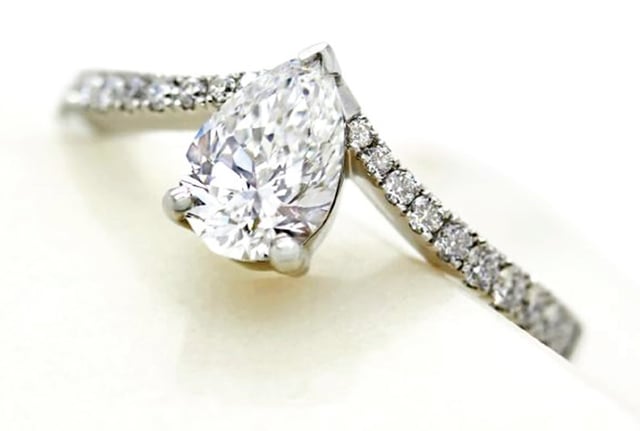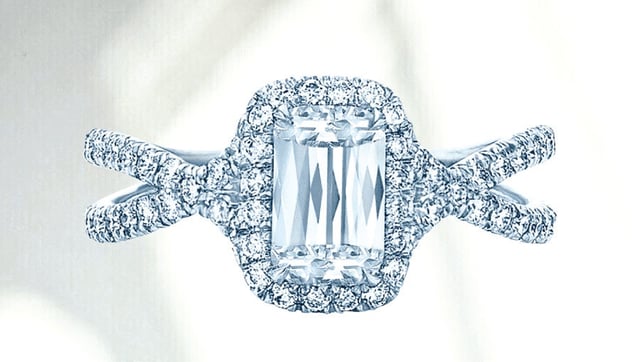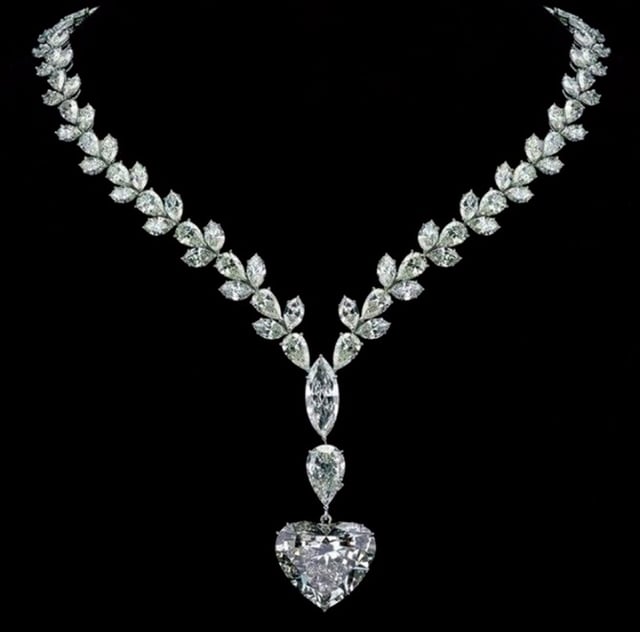

According to Viral Kothari, founder and director, Kosha Jewels, “Diamonds are always on top when it comes to demand. No matter what. This is because diamonds are eternal. When we think about giving a loved one a piece of jewellery as a memorable gift, the first thought is about diamonds. Also because of the current situation people haven’t been able to spend on vacations or weddings, so that’s why during these times also people feel that it’s a wise decision to invest their savings in buying diamond jewellery which will be an investment for life.”
Demand- supply tango continues
Supply and demand dynamics play
a great role in price determination. this shape. We are immensely grateful
to our erstwhile suppliers who have
kept supplying diamonds even during
the pandemic and this has enabled us
to fulfill orders in time. So we have
never had to face difficulty,” explains
Viral Kothari. In case the supply of
a particular variety is short, Viral
Kothari usually waits for the right cut
and quality and does not compromise
on the quality of his jewellery and he
doesn’t mind paying extra and getting
the desired goods and right quality to
complete orders.
Explains Ashish Goyal, Kotawala Fine
Jewels, “After a while, diamond mining
companies halt the mining process as
it is not profitable and hence in some
time the prices get corrected, right now,
this is the situation. The moment prices
drop to a certain level then it becomes
unprofitable.”
Due to Covid, globally a lot of mines halted their production and even in India where majority of rough manufacturing takes place the processes were halted. “This stemmed from many reasons such as travel restrictions, miners being forced to work in smaller capacities or local lockdowns in certain places which prevented a few miners from operating at all,” opines Poonam Kothari of Flawless Company.
Most jewellers rely on long standing relations developed with their suppliers to ensure unstinted supply of cut and polished diamonds. “In the last few months the prices of smaller coloured diamonds have increased and there has also been a drastic shortage of smaller sieves, comparatively the pear shape diamonds are easy to source since the movement in the market is slow for

Supply of niche cuts is
on the low
U.S. and China recovery is fueling
optimism, but uncertainty persists due
to the uncertain coronavirus situation
in India. In Europe the uncertainty is
relatively weak. A supply volatility is
expected in the near future. Polished
inventory levels are declining as
manufacturers are reducing capacity
and are focusing on 1 ct and larger
diamonds. In the U.S. consumer
confidence is up as compared to
the pre-pandemic levels. In China
pandemic regulations starting to ease.
Government green-lights a travel
bubble with Singapore beginning on
May 26.
Supply shortages of 1.25 to 3.99 ct., F-J, VVS2-SI2 in fancies have been observed. Retailers are offering wider product ranges as consumers seek alternative shapes at more affordable prices than rounds. Dealers are witnessing increased sales of fancyshape engagement rings. There is a rise in orders for Ovals, Pears, Emeralds, Princess, long Radiants and Marquise. Excellent cuts are in demand and are selling at premiums. Steady orders are coming in from China, which is helping the market. Off-make, poorly cut fancies illiquid and difficult to sell are also getting sold, because of the shortage.

Overall, there is some shortage in every category but sourcing fancies has become more difficult as it is usually the primary focus for big manufacturers. “Also, certain investment type stones like D, FL, and VVS have witnessed prices escalating rapidly as many investors and high net worth individuals started buying those for investment purposes as well in order to diversify from the stock market to store their wealth,” explains Poonam Kothari.Dealers in the USA are positive amid stable trading. Melee strengthening in G-I, VS-SI ranges that are popular in wedding bands and fashion-jewelry pavé settings. 1 to 2 ct., G-I, VS-SI diamonds for engagement rings performing well. Fancy shapes improving as shoppers seek distinctive looks in post-pandemic period.
In order to deal with this uncertainty Poonam Kothari always keeps a good stock inventory of diamonds that is easily replaceable even with current production standards. “So the best option is to always try and source a similar specification for the client in case the exact match is not available whether it is one colour grade plus or minus. If that is not available as well, then we try to convince client to accept similar specifications with some fluorescence, either Faint or Medium. Recently, we have also suggested clients to select a diamond with certification from an alternative lab, for example from GIA they could switch to either HRD or IGI,” he informs.


A Catch-22 situation
With countries facing multiple waves
there does not seem to be an exact
timeframe of when prices will stabilize.
But this uncertainty is causing overall
decline in demand. In some regions of
the world, market for fancies is seeing an
upturn. In some places prices are rising
as jewellers seek alternative shapes at
more affordable prices than rounds.
Dealers are witnessing increased sales
of fancy-shape engagement rings.
Across the world there is a rise in
orders for Ovals, Pears, Emeralds and
Radiants above 2 ct. Cushion, Princess
and Marquise improving. Buyers are
showing preference for elongated
shapes with the right proportions.
Excellent cuts are in demand and are
selling at premiums. Steady orders
are trickling in from China which is
helping the market. Off-make, poorly cut fancies illiquid and difficult to sell
too are getting sold because of lack
of supply of niche cuts and existing
market demand.
“Diamonds have impart a royal feel
to every wearer. Therefore demand for
diamonds will not fall,” beams Viral
Kothari.Responding to the impact of
rise in prices of roughs Poonam Kothari
says “As a jewellery manufacturer, it
has somewhat been positive because we
are able to generate a larger turnover
based on the fact that the cost of raw
material has gone up which makes the
entry points for buyers much higher.
However, on the diamond distribution
and trading front, certain clients are
extremely specific, they always have
a budget in mind and if it’s something
they have been buying for many years,
it’s difficult to ask them to pay a higher
price. Some will agree to the increased
prices, but when you see 7-10% jump
in certain categories, and with diamond
margins being so slim, you end up
missing the sale.” On the flip side, if
there is a certain diamond you have in
your stock and there is an order for with
which the specifications match, chances
are higher that your diamond will be
sold. As customers are not getting as
many options to select from like before.
Replacement cost is also higher, so if
sellers are not able to achieve higher
prices when selling, they would rather
hold onto their inventory longer.
“In the next 2 to 3 months I do
see prices stabilizing but we would
only get the much needed clarity
once the situation in India improves
and factories start operating at their
optimum capacities” sums up Poonam
Kothari.
Follow DiamondWorld on Instagram: @diamondworldnet
Follow DiamondWorld on Twitter: @diamondworldnet
Follow DiamondWorld on Facebook: @diamondworldnet
